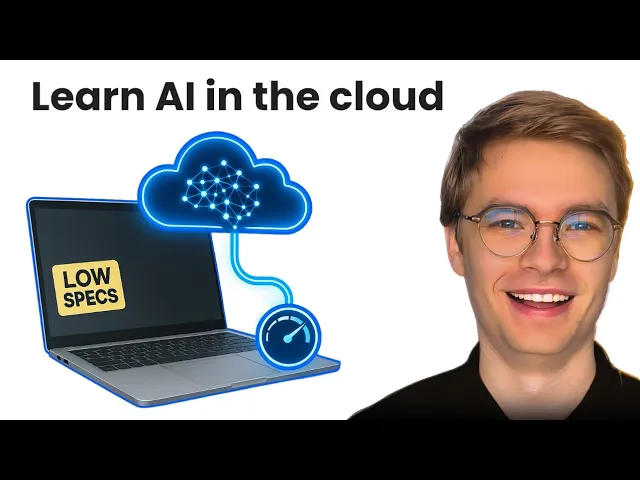Learn AI Without Expensive Hardware
The barrier to entry for AI learning has historically been steep, particularly when it comes to hardware requirements. Many aspiring AI engineers believe they need the latest MacBook Pro or a custom-built PC with a top-tier NVIDIA GPU to even begin their journey. This misconception prevents countless talented individuals from entering the field.
Fortunately, this hardware barrier is now completely artificial. Cloud development environments have transformed how we approach AI education, making it accessible to virtually anyone with an internet connection. Learn more about the complete AI engineering toolkit that makes professional development possible on any budget.
The Hardware Dilemma in AI Education
Running AI models locally is notoriously resource-intensive. Training even moderately sized models can quickly overwhelm average consumer hardware, leading to frustratingly slow performance or complete system crashes. This reality creates a significant accessibility gap in AI education.
However, the solution doesn’t lie in purchasing expensive equipment. Instead, it exists in leveraging cloud resources that are specifically designed for compute-intensive workloads.
Cloud Environments: The Great Equalizer
Cloud development environments offer several advantages that make them ideal for AI learning:
- Powerful computing resources: Access to machines with sufficient RAM, processing power, and sometimes even GPU acceleration
- Pre-configured development tools: Most cloud environments come with essential AI development tools already installed
- Fast internet connectivity: Cloud providers offer excellent bandwidth, dramatically speeding up model downloads
- Accessibility from any device: Your local machine serves merely as a terminal, not as the computational workhorse
What many don’t realize is that several platforms offer substantial free tiers for these cloud environments. These free allowances are more than sufficient for most learning purposes, providing up to 30 hours of usage per month on reasonably powerful machines.
Maximizing Free Cloud Resources
The monthly free allowances offered by cloud development platforms are surprisingly generous. With strategic usage, you can:
- Complete multiple AI engineering courses without spending a dime
- Run smaller but functional language models to understand core concepts
- Build complete AI-powered web applications
- Experiment with various model architectures and hyperparameters
- Connect to these environments from virtually any computer, even older models with limited specs
This approach dramatically democratizes AI education. A student using a 10-year-old laptop in a region with limited resources has access to the same learning environment as someone with the latest hardware in a major tech hub.
Breaking Down Global Barriers
Beyond solving the hardware problem, cloud environments address another significant barrier: internet speed disparities. When your AI development happens in the cloud:
- Model downloads occur at data center speeds, not your local connection
- Large datasets transfer quickly within the cloud infrastructure
- Updates and dependencies install in seconds rather than hours
This global equalization effect cannot be overstated. It fundamentally changes who can participate in the AI revolution.
The Future of AI Learning
As AI continues to evolve rapidly, the knowledge gap between those with access to powerful hardware and those without would typically widen. Cloud development environments reverse this trend, ensuring that educational opportunities remain accessible regardless of financial resources.
The future AI engineer needs to understand these cloud-native workflows anyway, as most production AI systems run in cloud environments. By learning in the cloud from day one, you’re actually gaining valuable practical experience that mirrors real-world deployment scenarios. For a comprehensive learning path, explore my AI engineering career roadmap.
To see exactly how to implement these concepts in practice, watch the full video tutorial on YouTube. I walk through each step in detail and show you the technical aspects not covered in this post. If you’re interested in learning more about AI engineering, join the AI Engineering community where we share insights, resources, and support for your learning journey.

